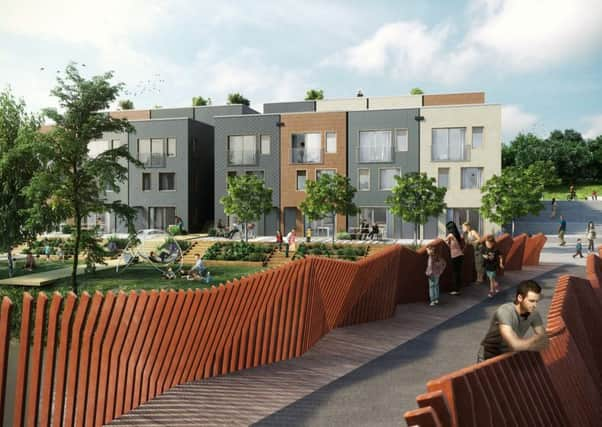Jonathan Wilson: going net zero-carbon offers fantastic opportunities


Talk of a net zero-carbon target inevitably leads to technical questions regarding its delivery, such as deployment of hydrogen for industrial processes, whether or not CSS technology will be available and how difficult to decarbonise sectors will manage the transition.
These questions are vital but miss what is required for sustained action – a compelling vision. If we can show that living a net-zero carbon lifestyle improves people’s lives, then we can demonstrate that this is an opportunity to be seized, not a cost to bear.
Advertisement
Hide AdAdvertisement
Hide AdFor a vision to be compelling, it must tangible. White papers don’t change public perceptions. But places do.
Everyone has their favourite place. From the grandeur of Edinburgh’s Royal Mile to the buzz of Hanoi’s old town, places always evoke strong feelings. By creating sustainable places in the centres of two of the North’s most dynamic cities, we can simultaneously showcase the real benefits of living more sustainably to homebuyers and demonstrate the economic viability of this way of building to act as a catalyst within the construction industry.
At Citu, our mission is to accelerate the transition to zero-carbon cities. We do it by creating places that make it easy to live a more sustainable lifestyle. The homes within are built with the latest sustainable technology (over ten times more efficient than average UK homes). MVHR systems, air-tight thermal envelopes and the removal of all thermal bridges allows them to forgo gas boilers, and instead they’re heated by electricity from 100 per cent renewable sources.
Important as it is, using the right technology is merely a vehicle for achieving one aspect of creating a sustainable future. The real key to realising our vision of creating sustainable communities is a relentless focus on placemaking.
Advertisement
Hide AdAdvertisement
Hide AdA place is something that has meaning intrinsically. Meaning to the individual, to the community and to the surrounding city. If we create an ‘eco-district’ shut-off from its surroundings, it will not be a catalyst for wider change. So, we’ve made interaction with the wider city an intrinsic part of the design of the Climate Innovation District in Leeds, our flagship development.
The new pedestrian bridge at the site, partly funded by the LEP, spans the River Aire and allows both residents and those living in the surrounding community to walk to Leeds train station and the amenities of the city without crossing many roads.
By weaving the Climate Innovation District seamlessly into the wider city, we’re able to create a fantastic addition to Leeds’s urban fabric. Drawing on lessons from around the world, we’ve found that all the best streets share three key characteristics. They’re not dominated by cars, they are of a walkable density, and they are a place in their own right.
Creating a car-free landscape encourages walking and cycling, and will allow pupils attending the new primary school at the site to be safer.
Advertisement
Hide AdAdvertisement
Hide AdThe district’s design has prioritised place so it acts as a destination in its own right, drawing in the community so streets become places to be, not only a means to go from A to B.
This insight is by no means unique to Citu. UK businesses across all sectors must ensure they are ready to achieve net-zero carbon, but in doing so they will discover that reaching net-zero offers fantastic opportunities alongside technical challenges.